Confectionary maker Suehiroan is hoping these daifuku rice cakes decorated with a four-leaf clover will provide encouragement for students taking entrance exams!
mochi (Page 5)
Who knew the seemingly specialized kitchen gadget was so multitalented?
Last February, we had the opportunity to combine our loves for Japanese food and ice cream when Häagen-Dazs released a line of ice cream topped by mochi rice cakes and flavored like traditional Japanese confectionaries. We got our hands on one flavor and were blown away by how amazing it tasted, and so was the rest of Japan.
Before long, the supplies of both flavors of mochi ice cream were exhausted, and the freezer sections of convenience stores and supermarkets across Japan has always looked a little lonelier in their absence. Now, though, Häagen-Dazs has announced that its kinako kuromitsu and mitarashi kurumi mochi ice creams, featuring roasted soybean flour, black sugar syrup, sweet soy glaze, and walnuts, are making a triumphant return.
Vegetarians traveling to Japan may find it difficult to find food that fits their dietary lifestyle. Fish seems to be in everything including the soup stock used to make miso soup. To make matters worse, many foods in convenience stores, bakeries or even Starbucks have misleading labels, and that “vegetable sandwich,” or “vegetable pizza” may actually have meat in it too! You can order foods like okonomiyaki or monjayaki with no meat, but you still can’t be sure it won’t come with shredded fish flakes on top that there isn’t fish lurking in the dashi-based sauces.
I always recommend to my vegetarian friends that rather than asking Japanese restaurants to make something special for them, it’s better to just order food that doesn’t have fish or meat (or dairy) in it from the beginning. Fish has always been a staple in the Japanese diet, but the eating of wild and domestic game was banned for over 1,200 years in Japan, and Buddhist tradition gave rise to a special vegetarian cuisine called shojin ryori. Even now, the traditional Buddhist meal called ozen (rice, miso soup, pickles, boiled/simmered vegetables and beans), is still served at funerals in Japan.
So traditionally, there is a lot of vegetarian food in the Japanese diet. You just have to discover it. And RocketNews24 is here to help! In this article we’ll introduce you to common Japanese dishes that can be ordered at almost any Japanese restaurant that have no meat, fish or animal products in them, so, let’s jump into Japanese vegetarianism 101.
Mochi rice cakes, made from glutinous rice, come in all shapes and sizes. They’re soft and filling, and they can be enjoyed as a dessert or a meal, depending on how they’re prepared. What’s not to like, right?
And now it looks like someone’s created these insanely adorable animal-shaped cakes out of mochi…but wait, is that what they really are? Would you believe us if we told you these are actually soft toy figures that look and feel like mochi? Well, whatever they are, these little critters are sure to elicit delighted squeals of “kawaii!”
There are a ton of different ways to eat mochi, with roasting it or dropping it into soup or hot pots being some of the more common. Outside of Japan, though, many people’s first encounter with mochi is in the form of ice cream-filled mochi spheres sold at specialty grocers.
But while they make a tasty treat, what would happen if you reversed the process, and instead of putting ice cream in mochi, put mochi into ice cream? That’s the question posed by Häagen-Dazs new kinako kuromitsu mochi ice cream, and we’re here with the answer.
Every time Häagen-Dazs comes out with a new ice cream flavor, we swear we can almost hear the collective groan of sweets lovers across Japan saying, “Darn it! Why do they have to come up with something so insanely tempting?” Well, it looks like they’ve done it again, this time using a traditional Japanese ingredient — mochi rice cakes! What? Cold, creamy ice cream and soft mochi, did you say? Now, that’s certainly caught our attention!
Ah mochi, the delicious Japanese sweet. It can come in all different shapes and flavors, from the loveable daifuku with sweet bean paste filling, to hot zenzai soup with azuki beans and white mochi, to such delights as mochi ice cream and even chocolate cow poop mochi.
Since mochi is a traditional New Year’s treat in Japan – you can even reserve your New Year’s kagami mochi at Baskin Robins – more of it is consumed around this time of year than any other.
But all that mochi-eating has a dark side to it. With its incredibly sticky texture, mochi causes the most choking-related deaths of any food item in Japan. Last year it killed two people during the New Year season, and after just two days into 2015 it has already claimed nine lives and hospitalized 128 others.
This week in Japan, people around the country are celebrating a special event known as tsukimi, literally “moon-viewing”. Celebrated on the 15th day of the lunar calendar (which lands sometime between September and October) it is the best time to look at the moon because the position of the earth, sun and moon make it appear especially big and bright. Just as with cherry blossom viewing, it’s a time to honor the beauty of nature with food, drink and friends.
One of the most traditional foods to celebrate with is called tsukimi dango which are sweets made of mochi (Japanese rice cake). But just as the Japanese dialect isn’t the same from Hokkaido to Okinawa, the look and taste of tsukimi dango vary from region to region. Here are three of the most interesting versions from across Japan!
With New Year’s just around the corner supermarkets and department stores all over Japan are displaying kagami mochi. These are mounds of the popular Japanese food mochi which is made from rice and has a gummy consistency.
They can serve as household decorations up until 1 January when they may then be happily, and hopefully safely, devoured. However, mochi has a subtle sweetness that some might find rather bland. If that’s the case for you then Baskin Robbins is hoping you’ll enjoy their Kagami Mochi Ice Cream Cakes.
A popular confectionery around the New Year’s season in Japan is mochi. Mochi is often translated to “rice cake” but is nothing like the Styrofoam discs of the same name that are popular in some countries and doesn’t really resemble a cake at all. It can either be more like a soft “rice gummy”, usually stuffed with sugary foods like sweet beans, strawberry, or even ice cream; or like a “condensed rice block”, which is often basted in soy sauce, grilled, and wrapped in seaweed.
Mochi is made by whacking rice in a tub repeatedly with a giant wooden mallet, a fun but tiring holiday festivity. During New Year’s mochi is sold in a small snowman like configuration called kagami mochi (pictured above) which serves as a decoration until it is eaten after 1 January.
While all of this sounds fun, mochi has a dark side as well – one that foreigners who try it for the first time often realize quickly: It’s chewy, sticky, and really hard to eat.
And if you’re not careful, this little snack could land you in the ER.
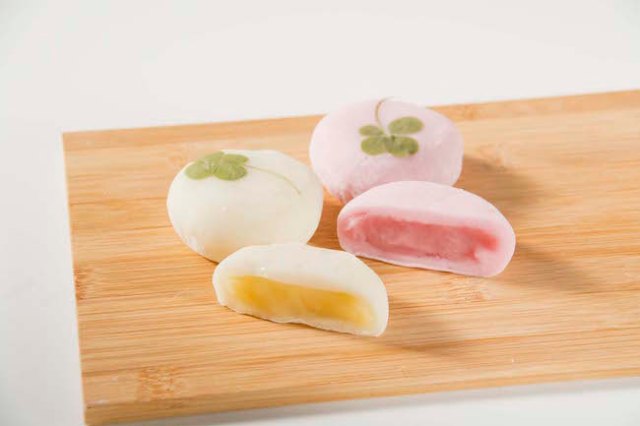
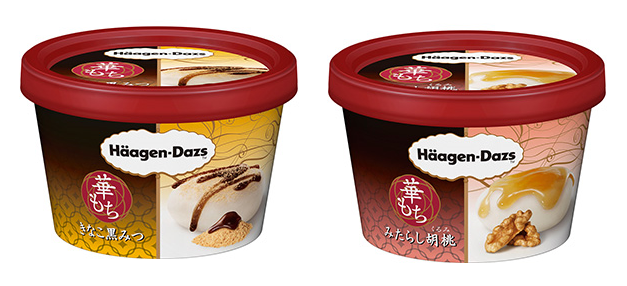
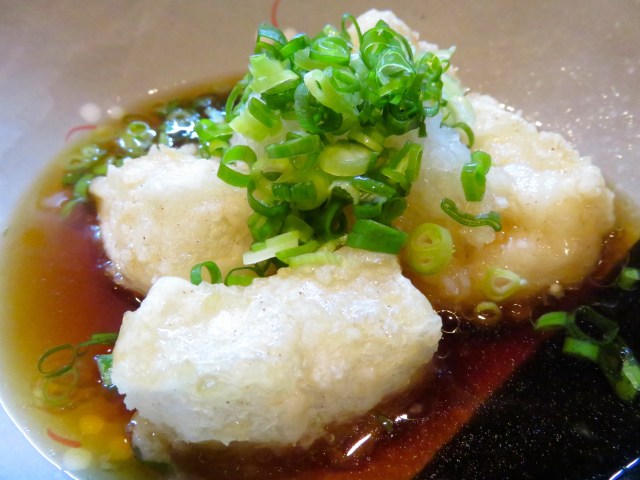
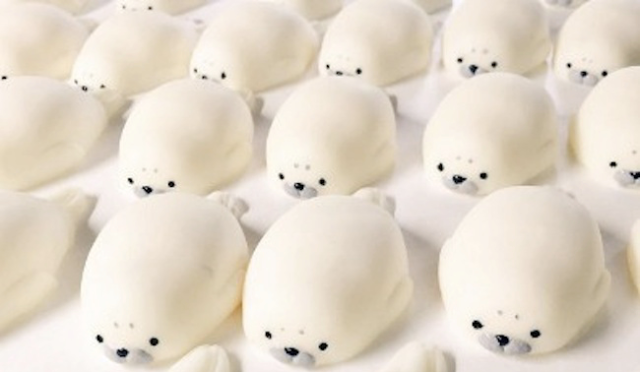
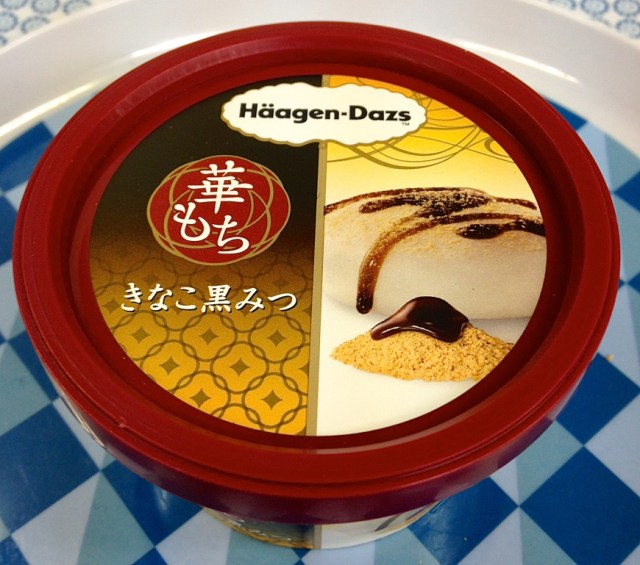
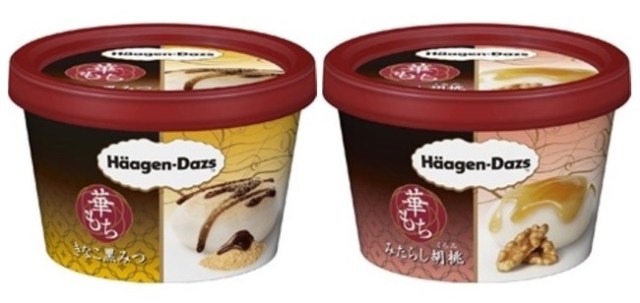
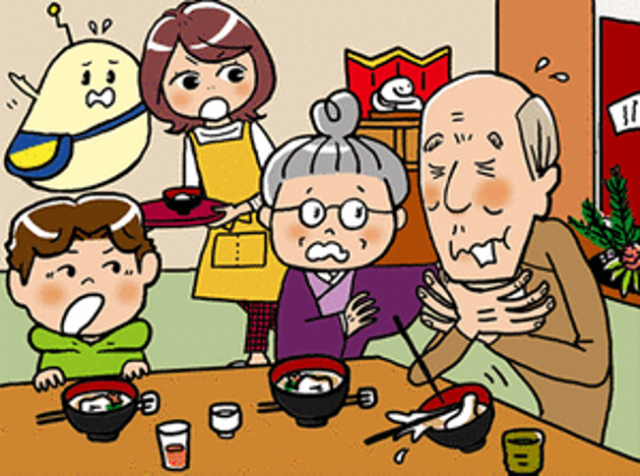
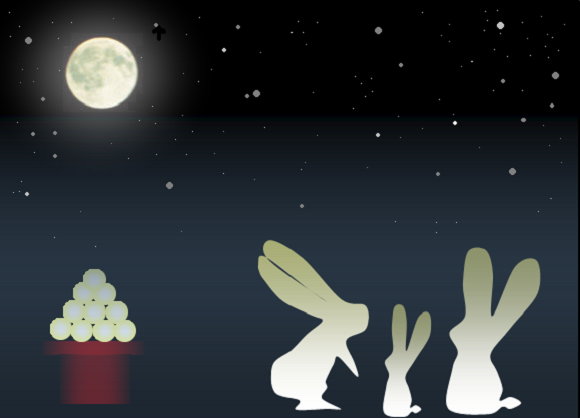
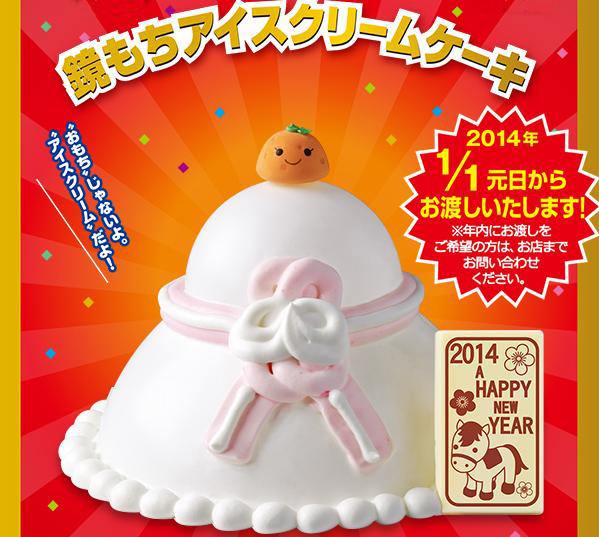
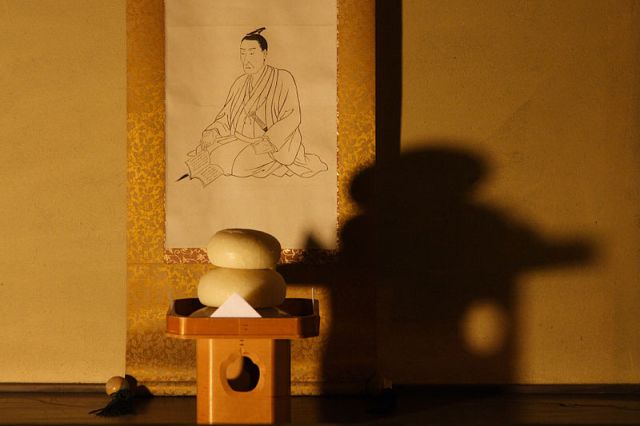
 Japanese ramen restaurants under pressure from new yen banknotes
Japanese ramen restaurants under pressure from new yen banknotes New private rooms on Tokaido Shinkansen change the way we travel from Tokyo to Kyoto
New private rooms on Tokaido Shinkansen change the way we travel from Tokyo to Kyoto French Fries Bread in Tokyo’s Shibuya becomes a hit on social media
French Fries Bread in Tokyo’s Shibuya becomes a hit on social media McDonald’s new Happy Meals offer up cute and practical Sanrio lifestyle goods
McDonald’s new Happy Meals offer up cute and practical Sanrio lifestyle goods Sakura tree falls on man at Sannenzaka near Kiyomizu temple in Kyoto 【Breaking News】
Sakura tree falls on man at Sannenzaka near Kiyomizu temple in Kyoto 【Breaking News】 We tried Korea’s way-too-big King Tonkatsu Burger at Lotteria 【Taste Test】
We tried Korea’s way-too-big King Tonkatsu Burger at Lotteria 【Taste Test】 Cosplay in front of explosions and flames at the upcoming fiery Baku Festival
Cosplay in front of explosions and flames at the upcoming fiery Baku Festival Japanese government proposes driver’s license change to make them easier for foreigners to read
Japanese government proposes driver’s license change to make them easier for foreigners to read Secret Kitchen bento serves Japanese flowers, birds, wind and moon in a box, but is it worth it?
Secret Kitchen bento serves Japanese flowers, birds, wind and moon in a box, but is it worth it? Super Nintendo World expansion gets delayed for several months at Universal Studios Japan
Super Nintendo World expansion gets delayed for several months at Universal Studios Japan All-you-can-drink Starbucks and amazing views part of Tokyo’s new 170 meter-high sky lounge
All-you-can-drink Starbucks and amazing views part of Tokyo’s new 170 meter-high sky lounge More foreign tourists than ever before in history visited Japan last month
More foreign tourists than ever before in history visited Japan last month Starbucks reopens at Shibuya Scramble Crossing with new look and design concept
Starbucks reopens at Shibuya Scramble Crossing with new look and design concept Studio Ghibli releases new action figures featuring Nausicaä of the Valley of the Wind characters
Studio Ghibli releases new action figures featuring Nausicaä of the Valley of the Wind characters Studio Ghibli glasses cases let anime characters keep an eye on your spectacles
Studio Ghibli glasses cases let anime characters keep an eye on your spectacles Is the new Shinkansen Train Desk ticket worth it?
Is the new Shinkansen Train Desk ticket worth it? Beautiful Ghibli sealing wax kits let you create accessories and elegant letter decorations【Pics】
Beautiful Ghibli sealing wax kits let you create accessories and elegant letter decorations【Pics】 Studio Ghibli releases Kiki’s Delivery Service chocolate cake pouches in Japan
Studio Ghibli releases Kiki’s Delivery Service chocolate cake pouches in Japan New definition of “Japanese whiskey” goes into effect to prevent fakes from fooling overseas buyers
New definition of “Japanese whiskey” goes into effect to prevent fakes from fooling overseas buyers Our Japanese reporter visits Costco in the U.S., finds super American and very Japanese things
Our Japanese reporter visits Costco in the U.S., finds super American and very Japanese things Studio Ghibli unveils Mother’s Day gift set that captures the love in My Neighbour Totoro
Studio Ghibli unveils Mother’s Day gift set that captures the love in My Neighbour Totoro Domino’s Japan now sells…pizza ears?
Domino’s Japan now sells…pizza ears? New Japanese KitKat flavour stars Sanrio characters, including Hello Kitty
New Japanese KitKat flavour stars Sanrio characters, including Hello Kitty New Pokémon cakes let you eat your way through Pikachu and all the Eevee evolutions
New Pokémon cakes let you eat your way through Pikachu and all the Eevee evolutions Sales of Japan’s most convenient train ticket/shopping payment cards suspended indefinitely
Sales of Japan’s most convenient train ticket/shopping payment cards suspended indefinitely Sold-out Studio Ghibli desktop humidifiers are back so Totoro can help you through the dry season
Sold-out Studio Ghibli desktop humidifiers are back so Totoro can help you through the dry season Japanese government to make first change to romanization spelling rules since the 1950s
Japanese government to make first change to romanization spelling rules since the 1950s Ghibli founders Toshio Suzuki and Hayao Miyazaki contribute to Japanese whisky Totoro label design
Ghibli founders Toshio Suzuki and Hayao Miyazaki contribute to Japanese whisky Totoro label design Doraemon found buried at sea as scene from 1993 anime becomes real life【Photos】
Doraemon found buried at sea as scene from 1993 anime becomes real life【Photos】 Tokyo’s most famous Starbucks is closed
Tokyo’s most famous Starbucks is closed One Piece characters’ nationalities revealed, but fans have mixed opinions
One Piece characters’ nationalities revealed, but fans have mixed opinions We asked a Uniqlo employee what four things we should buy and their suggestions didn’t disappoint
We asked a Uniqlo employee what four things we should buy and their suggestions didn’t disappoint Princesses, fruits, and blacksmiths: Study reveals the 30 most unusual family names in Japan
Princesses, fruits, and blacksmiths: Study reveals the 30 most unusual family names in Japan We tried Korea’s way-too-big King Tonkatsu Burger at Lotteria 【Taste Test】
We tried Korea’s way-too-big King Tonkatsu Burger at Lotteria 【Taste Test】 Cosplay in front of explosions and flames at the upcoming fiery Baku Festival
Cosplay in front of explosions and flames at the upcoming fiery Baku Festival Japanese government proposes driver’s license change to make them easier for foreigners to read
Japanese government proposes driver’s license change to make them easier for foreigners to read Secret Kitchen bento serves Japanese flowers, birds, wind and moon in a box, but is it worth it?
Secret Kitchen bento serves Japanese flowers, birds, wind and moon in a box, but is it worth it? Super Nintendo World expansion gets delayed for several months at Universal Studios Japan
Super Nintendo World expansion gets delayed for several months at Universal Studios Japan Katsudon vs. tonkatsu vs. katsu sandwich – What’s the best way to eat pork cutlet in Japan?
Katsudon vs. tonkatsu vs. katsu sandwich – What’s the best way to eat pork cutlet in Japan? Japanese company starts project to restore Nakagin Capsules to capsule hotel
Japanese company starts project to restore Nakagin Capsules to capsule hotel Better than Apple EarPods? Our 100 yen shop earphone showdown finds a true champion
Better than Apple EarPods? Our 100 yen shop earphone showdown finds a true champion Amazing exhibition of Japan’s legendary “cursed katana” is going on right now【Photos】
Amazing exhibition of Japan’s legendary “cursed katana” is going on right now【Photos】 New Pokémon cakes let you eat your way through Pikachu and all the Eevee evolutions
New Pokémon cakes let you eat your way through Pikachu and all the Eevee evolutions A trip to hell on Japan’s ‘vomit ship’: Is it as bad as everyone says it is?
A trip to hell on Japan’s ‘vomit ship’: Is it as bad as everyone says it is? 7 hilarious/inexplicable Japan moments in South Park
7 hilarious/inexplicable Japan moments in South Park We found a popular Japanese ramen chain in South Korea!…or so we thought
We found a popular Japanese ramen chain in South Korea!…or so we thought What’s the best way to spend 1,000 yen at Muji Japan?
What’s the best way to spend 1,000 yen at Muji Japan?